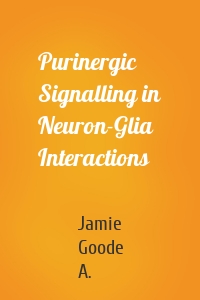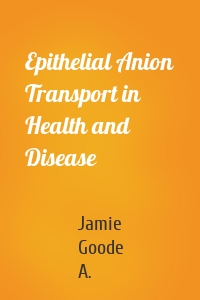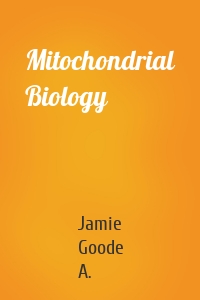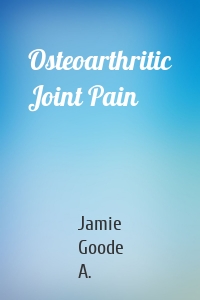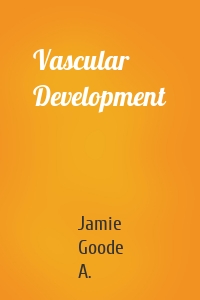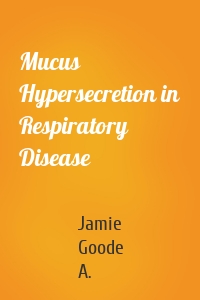Jamie Goode A.
33 кн.
Signalling Pathways in Acute Oxygen...
Oxygen sensing is a key physiological function of many tissues, but the identity of the sensor, the signalling pathways linking the sensor to the effector, and the endpoint effector mechanisms are all subjects of controversy. This book evaluates the various mediators that have been proposed, including the mitochondria, NAD(P)H oxidases, cytochrome p450 enzymes, and direct effects on enzymes and ion channels. There has been a resurgence of interest in the role of mitochondria, based partly on the...
| Автор | Jamie Goode A. |
Purinergic Signalling in Neuron-Gli...
ATP, the intracellular energy source, is also an extremely important cell–cell signalling molecule for a wide variety of cells across evolutionarily diverse organisms. The extracellular biochemistry of ATP and its derivatives is complex, and the multiple membrane receptors that it activates are linked to many intracellular signalling systems. Purinergic signalling affects a diverse range of cellular phenomena, including ion channel function, cytoskeletal dynamics, gene expression, secretion,...
| Автор | Jamie Goode A. |
Epithelial Anion Transport in Healt...
Cl- absorption and HCO3- secretion are intimately associated processes vital to epithelial function, itself a key physiological activity. Until recently the transporters responsible remained obscure, but a breakthrough occurred with the discovery of the SLC26 transporters family. It is now clear that the SLC26 transporters have broad physiological functions since mutations in several members are linked to a variety of diseases. This book describes the properties of this family in detail, with...
| Автор | Jamie Goode A. |
Nuclear Organization in Development...
This book draws together contributions from cell and developmental biologists, structural biologists, geneticists and clinical scientists aimed at a better understanding of the cellular and molecular basis of these diseases. Topics include: How nuclear structure and location within a nucleus affect gene expression Chromatin organization and cell differentiation The nature of the interactions between the nuclear envelope and the cytoskeleton The extent to which the cytoskeleton mediates...
| Автор | Jamie Goode A. |
Mitochondrial Biology
With the recent renaissance in mitochondrial biology and increasing recognition of their role in many diseases, this book provides a timely summary of the current state-of-the-art in mitochondrial research. The book opens with the regulation of mitochondrial replication and biogenesis and reviews the mechanisms and functional consequences of mitochondrial fission and fusion. Further chapters address mitochondria and oxidative stress and their roles in cell signalling and cell death. The book...
| Автор | Jamie Goode A. |
The Biology of Extracellular Molecu...
The heat shock, or cell stress, response was first identified in the polytene chromosomes of Drosophila. This was later related to the appearance of novel proteins within stressed cells, and the key signal stimulating this appearance was identified as the presence of unfolded proteins within the cell. It is now known that this is a key mechanism enabling cells to survive a multitude of physical, chemical and biological stresses. Since the promulgation of the ‘molecular chaperone’ concept as a...
| Автор | Jamie Goode A. |
Osteoarthritic Joint Pain
Osteoarthritis is a chronic degenerative disease associated with joint pain and loss of joint function. It has an estimated incidence of 4 out of every 100 people and significantly reduces the quality of life in affected individuals. The major symptoms are chronic pain, swelling and stiffness; severe, chronic joint pain is often the central factor that causes patients to seek medical attention. Within the affected joint, there is focal degradation and remodelling of articular cartilage, new bone...
| Автор | Jamie Goode A. |
Vascular Development
The formation of blood vessels is an essential aspect of embryogenesis in vertebrates. It is a central feature of numerous post-embryonic processes, including tissue and organ growth and regeneration. It is also part of the pathology of tumour formation and certain inflammatory conditions. In recent years, comprehension of the molecular genetics of blood vessel formation has progressed enormously and studies in vertebrate model systems, especially the mouse and the zebrafish, have identified a...
| Автор | Jamie Goode A. |
Mucus Hypersecretion in Respiratory...
A number of chronic respiratory diseases including chronic bronchitis, asthma, cystic fibrosis and bronchiectasis are characterized by mucus hypersecretion. Following damage to the airway epithelium, a repair process of dedifferentiation, regenerative proliferation and redifferentiation takes place that is invariably accompanied by mucus hypersecretion as a key element in the host defence mechanism. In chronic respiratory diseases, however, excessive mucus production leads to a pathological...
| Автор | Jamie Goode A. |



